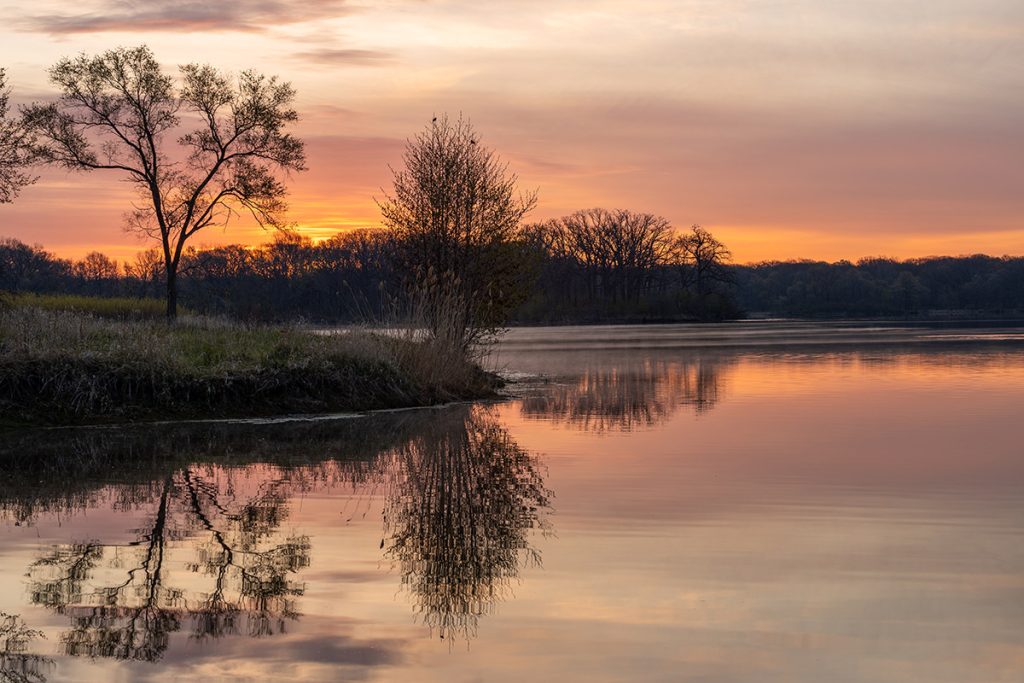On June 14, 2022, the Farm Service Agency (FSA) and the Illinois Department of Natural Resources (IDNR) announced the return of the Illinois Conservation Reserve Enhancement Program (CREP).
The restoration of this incentive-based program provides an excellent opportunity for Illinois farmers to take advantage of the Conservation Reserve Program (CRP) benefits on their land.
While the Illinois CREP was first introduced in 1998, the program was halted in 2015 due to a lack of funding. Now, enrollment has officially been reopened in 2022. This allows local governments and farmers in Illinois to collaborate and implement specific conservation practices that improve the local ecosystem.
What is the Illinois CREP?
Like traditional CRP, the focus of CREP is to advance conservation efforts across the country. Both programs aim to take environmentally sensitive land out of crop production and implement crucial conservation practices.
For example, highly erodible land is planted with native grasses, trees, and other vegetation to encourage soil stability. These practices benefit both the land and the environment, helping restore and protect vulnerable acreage.
But while CRP promotes general conservation practices, CREP efforts like the Illinois CREP focus on high-priority environmental problems inherent to their region. Additionally, CREP is funded by both the federal and state government to target specific local practices. These practices are determined by local, state, and tribal governments to provide the most benefit to their region.
What are the goals of the Illinois CREP?
Reduce runoff
One of the primary goals of the Illinois CREP is to reduce nutrient and sediment runoff to local waterways. Toxic runoff from pollutants like harmful chemicals and pesticides is detrimental to the environment as well as animal and human health. It also deteriorates the health of the soil, especially on highly erodible land.
The direct aims of the Illinois CREP are to reduce the total sediment loading of the Illinois River by 20 percent and reduce phosphorous and nitrogen loading by 10 percent. These goals will help to ensure the quality and safety of local rivers and streams.
Enhance wildlife habitat
In addition to runoff reduction, the Illinois CREP also focuses on enhancing local wildlife populations. Specifically, its goal is to increase local waterfowl, shorebirds, and state and federally listed species by 15%.
It also targets native fish and mussel stocks in the lower reaches of the Illinois River, with the intent to increase these populations by 10%. The creation, enhancement, and protection of local habitats through CREP will help these important native species thrive.
How can Illinois landowners participate in CREP?
By enrolling in the Illinois CREP, farmers and landowners receive 50% cost-share reimbursement, special annual payments, and additional payment incentives from both federal and state funding.
Private landowners and producers in the Illinois or Kaskaskia River Watershed are eligible to participate in the program, provided they meet one of two criteria. Eligible land must be adjacent to the 100-year floodplain or qualify as flooded or wetland riparian land. A new requirement of CREP in 2022 is that participants must be enrolled in both federal (CRP) and state (CREP) programs.
Participants in the program enroll in 14–15-year contracts but can extend their enrollment for an additional 15-35 years. Landowners can also opt to enroll their land in a permanent contract.
If you’re a private landowner or producer in Illinois interested in enrolling in CREP, reach out to us at FDCE. Since 2003, we have been assisting landowners with CRP enrollment and practices, helping to make the application and establishment process easy.
Contact us today or request a free quote to learn how we can help get your CREP project started off right.

